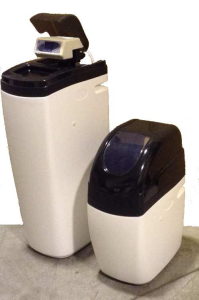

All Debian systems use GNU, but may have different kernels. For instance, Mastodon Linux (FreeBSD/Linux) uses the Linux kernel, but has FreeBSD applications (userland).ĭebian is a system that has many variants. Userland refers to the user-space applications. This means it has qualities of both, but hybrid kernels cannot be classified as a monolithic kernel or microkernel exclusively. One other type of kernel is called a hybrid kernel which lies on the boundary between monolithic kernels and microkernels. There is a lot more to the definition and more differences, but these are the main defining characteristics.
#RUNIX GITHUB DRIVERS#
In other words, the drivers exist in another part of the operating system.

This means microkernel system still have drivers, but they are not part of the kernel. In such systems, the device drivers are offered in another way and placed in the userspace. Monolithic kernels contain drivers (modules) and place them in kernelspace while microkernels lack drivers. For instance, one difference is the placement of device drivers. Monolithic systems have large kernelspaces. Monolithic kernels, however, contain much more. Microkernel systems have small kernelspaces and large userspaces. Microkernels offer the bare essentials to get a system operating. Linux is a monolithic kernel and Hurd is a microkernel. Two main types of kernels exist - monolithic kernels and microkernels. Many kernels exist for various operating systems. Also, Linux is not the only operating system with a module (obvious, right?). Not only do various userland and kernel combinations exist, there are different Linux kernels. For instance, Arch exists as "GNU/Linux" and "GNU/Hurd".

They then swapped the Linux kernel with the Hurd kernel to make "GNU/Hurd" systems. Today, the GNU community has a kernel called "Hurd". For example, in the beginning of Linux's history, the GNU community had no kernel at the time and Linux was just a kernel. Now, you may be wondering if these two components can be swapped. "GNU" refers to the userland and "Linux" refers to the kernel.

The easiest way to get familiar with the interface is by way of an example.Īgain, mind that you'll need nix on your PATH to use runix and have enabled experimental-features='nix-command flakes'.Aloha! Many Linux users are familiar with Linux being called "GNU/Linux". We greatly appreciate feedback and contributions. It's API is not yet deeply set in stone, more fields will be added as we expand the coverage of the Nix CLI and traits may change if necessary. Warning runix is still in active development! While this is the reference implmentation, other backends such as an FFI based implementation or Mocking shims for testing are possible. The backend currently in development is the command_line::NixCommandLine backend, which uses tokio::process::Command to exec the nix CLI. Runix converts command structures into an invocation of a NixBackend implementation. Runix is a library that allows you to run nix using a typed interface. Runix requires an existing nix installation. Runix = " " # check the latest version before adding


 0 kommentar(er)
0 kommentar(er)
